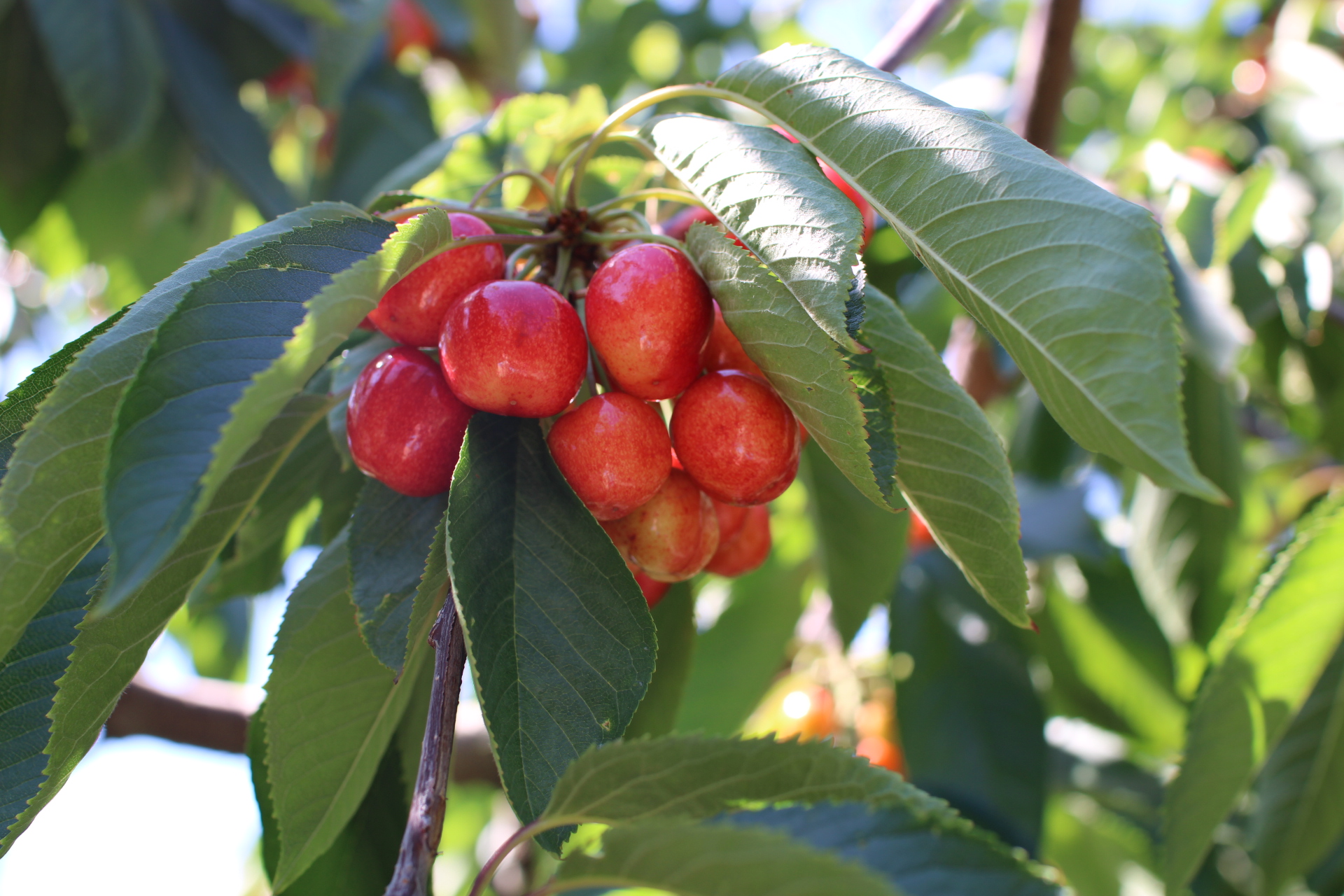
Decoding Cherry Pollination: A Guide to Matching Cherry Trees and Varieties
Cherry trees are not only beautiful additions to any orchard or backyard garden but also delightful providers of juicy, flavorful fruit. However, to ensure a bountiful harvest, it’s crucial to understand the intricacies of cherry tree pollination, even if you only want two trees. In this guide, we’ll explore how to match cherry trees with compatible varieties for successful pollination, ultimately enhancing your chances of enjoying a bumper crop.
- Understanding Cherry Tree Types: Before delving into pollination, it’s essential to recognize the two primary types of cherry trees: sweet cherry (Prunus avium) and sour cherry (Prunus cerasus). Sweet cherries are known for their larger, sweeter fruit, while sour cherries are tart and often used in baking and cooking. Popular locally grown varieties include Montmorency, Danube, and mostly Evans Bali. Here, around the Flathead lake you will most often find Sweet Cherries. Now you can make backed goods out of both, however, they both have a unique taste and baking qualities.
- The Importance of Cross-Pollination: Most cherry trees require cross-pollination to set fruit successfully. Cross-pollination occurs when pollen from one tree fertilizes the flowers of another tree. This process enhances fruit set and yield. Some local variety’s include Black Tartarian, Van, Bing, Lambert, Chelan, Tieton, and the favorite blushing yellow, Rainier. However, some self-pollinating cherry varieties exist, meaning they can produce fruit with their pollen alone. Such variety’s found in the area are Lapin, Skeena, Stella, Sweetheart.
- Choosing Compatible Varieties: When planning your cherry orchard or garden, it’s crucial to select cherry tree varieties that are compatible for cross-pollination. Different cherry varieties bloom at slightly different times, so selecting varieties with overlapping bloom periods is key. Consult local agricultural extension offices, nurseries, or us for information on cherry varieties that thrive in your specific area.
- Creating a Pollination Plan: Develop a pollination plan by selecting at least two compatible cherry varieties. This ensures that the trees will flower concurrently, facilitating cross-pollination. Plant the trees within a suitable distance for pollinators such as bees to transfer pollen between them and other trees. Be mindful of factors like wind direction, neighboring trees and other factors which can aid in natural pollination.
- Self-Pollinating Varieties: If space is limited or you prefer a simpler approach, consider self-pollinating cherry tree varieties. These trees are capable of setting fruit with their own pollen, eliminating the need for a second tree. Popular self-pollinating sweet cherry varieties include ‘Stella’ ‘Skeena’ and ‘Sweetheart,’ while self-pollinating sour cherry varieties include ‘Montmorency’ and ‘North Star.’ Now we suggest that you plant at least 2 trees. Even though these varieties are self-pollinating the pollen still needs to make it from the stamen to the anther. This can be done by gravity and the wind however we still depend on bees and other natural pollinizers to transfer the pollen this leads to a higher success rate of pollination no mater how far the target.
- Optimizing Growing Conditions: Ensure that your cherry trees receive adequate sunlight, well-draining soil, and proper care to promote healthy growth and maximize the chances of successful pollination. Proper pruning can also enhance air circulation, reducing the risk of disease and promoting optimal pollination conditions. Proper pruning also can effect crop load and size from year to year.
- Monitoring and Enjoying the Fruits of Your Labor: Keep a close eye on your cherry trees all year especially during the blooming period, observing the activity of pollinators and the development of fruit. Once the fruit begins to form, protect it from birds, cherry fruit fly and other potential pests to ensure a rewarding harvest.
By understanding the intricacies of cherry tree pollination and carefully selecting compatible varieties, you can create a thriving cherry orchard or garden. Whether you opt for cross-pollination or choose self-pollinating varieties, careful planning and attention to growing conditions will pave the way for a fruitful harvest and the enjoyment of delicious, homegrown cherries.